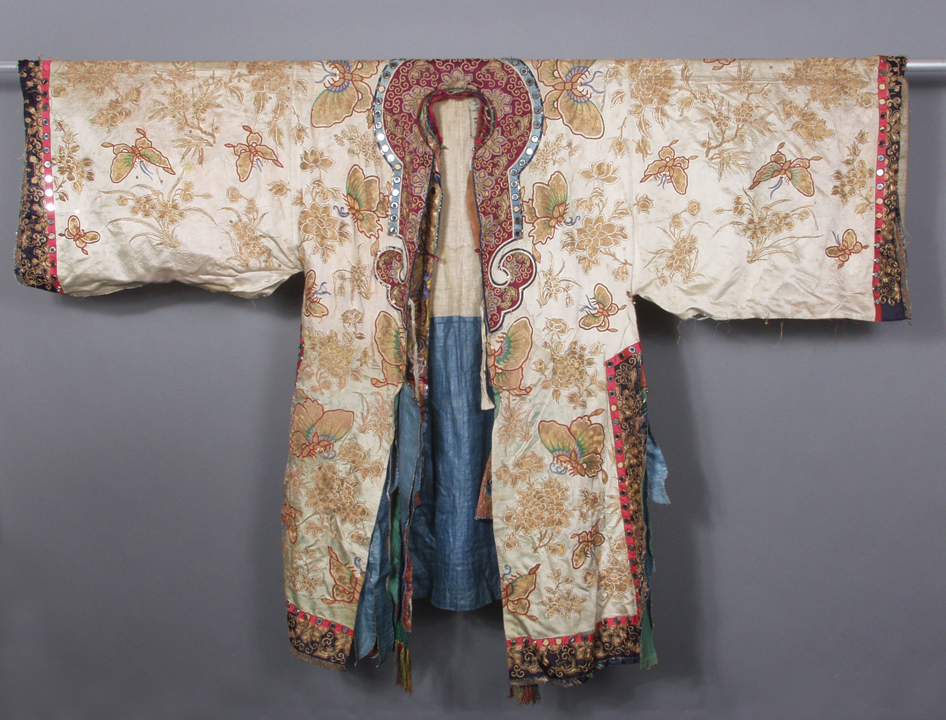
Theater Coat / Peking Opera Costume, White and red silk satin with multi-colored embroidery and applied decorations, 50 in. x 80 in., Scripps College, Claremont, CA
This double-sided robe was created for the Beijing Opera circa 1890–1900. It would have been worn during a performance for imperial or aristocratic audiences near the end of the Qing dynasty, which fell in 1911. The robe is composed of silk, elaborately embroidered on both sides with butterfly and flower imagery. The outer layer is white with gold embroidery, and, during an on-stage costume change, was flipped to reveal an inner layer of deep orange silk with gold-and-blue embroidery. Small mirrors sewn on throughout would have glinted brilliantly under stage lights. The robe has many hanging strips of fabric, and one can imagine the dramatic effect as the actor spun and flipped the costume. The use of such a lavishly decorated garment is typical of Chinese theater as performers, designers, and dressers strove to create a magnificent spectacle for their audiences.
This piece belongs to a tradition of costuming that is crucial to understanding the character and the narrative of the opera being performed. Each performer wore a costume consisting of multiple layers, as well as shoes and hats. These details were specifically chosen to communicate the particularities of the character that fell into the following six categories of primary identifiers: gender; class; age; wealth or poverty; civilian or military status; Han heritage or ethnic minority status, if applicable. Considering the symbols in the case at hand, it is likely that this opera robe was created for a young female character. Its embroidered butterflies consume nectar from peonies, suggesting an erotic connotation, with the butterfly symbolizing a male lover and the flower a female. While the significance of each image remains ambiguous, butterflies often indicate beauty, long life, happy marriages, and women’s romances. Peonies may connote wealth and prominence. However, it is nearly impossible to draw definitive conclusions, given the ambiguity of the symbolism and the many possibilities other costume elements add to the interpretation. Still, the amazing colors, juxtapositions of images, and metamorphic potential of the costume were intended to delight audiences, and indeed, they continue to provide a window into the splendor of Beijing opera for viewers today.
Marielle Epstein, Wilson intern, SC ’18
Works Consulted:
Bonds, Alexandra B. Beijing Opera Costumes: The Visual Communication of Character and Culture, University of Hawaii Press, 2008.
Chu Chia-Chien, and Alexandre Iacovleff. The Chinese Theatre. Translated by James A Graham, London, John Lane, 1922.
Corts, Alicia. “Costumes in Beijing Opera.” Asiantheatre
“The Peking Opera: Costumes and Colors.” Chinavine,

